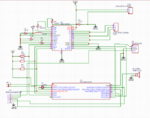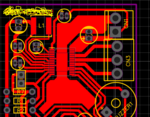ismu
Full Member level 2
Am using DRV10983 BLDC driver chip from TI . when i used new chip which is giving 5V as output but when i connect PIC16F676 on this 5V buck line voltage is dripping .
am havin one more chip which was already used in working product which is giving 5V and can able to connect PIC16F676 . Do i need to program internal EEPROM of DRV chip to get proper 5V out put first ? please help me what to do on these newly order chip to make up.
2- Is there any cheapest solution for connecting this DRV chip with TI PC application otherthan USB to Any hardware board ,(this is more expensive )
am havin one more chip which was already used in working product which is giving 5V and can able to connect PIC16F676 . Do i need to program internal EEPROM of DRV chip to get proper 5V out put first ? please help me what to do on these newly order chip to make up.
2- Is there any cheapest solution for connecting this DRV chip with TI PC application otherthan USB to Any hardware board ,(this is more expensive )

